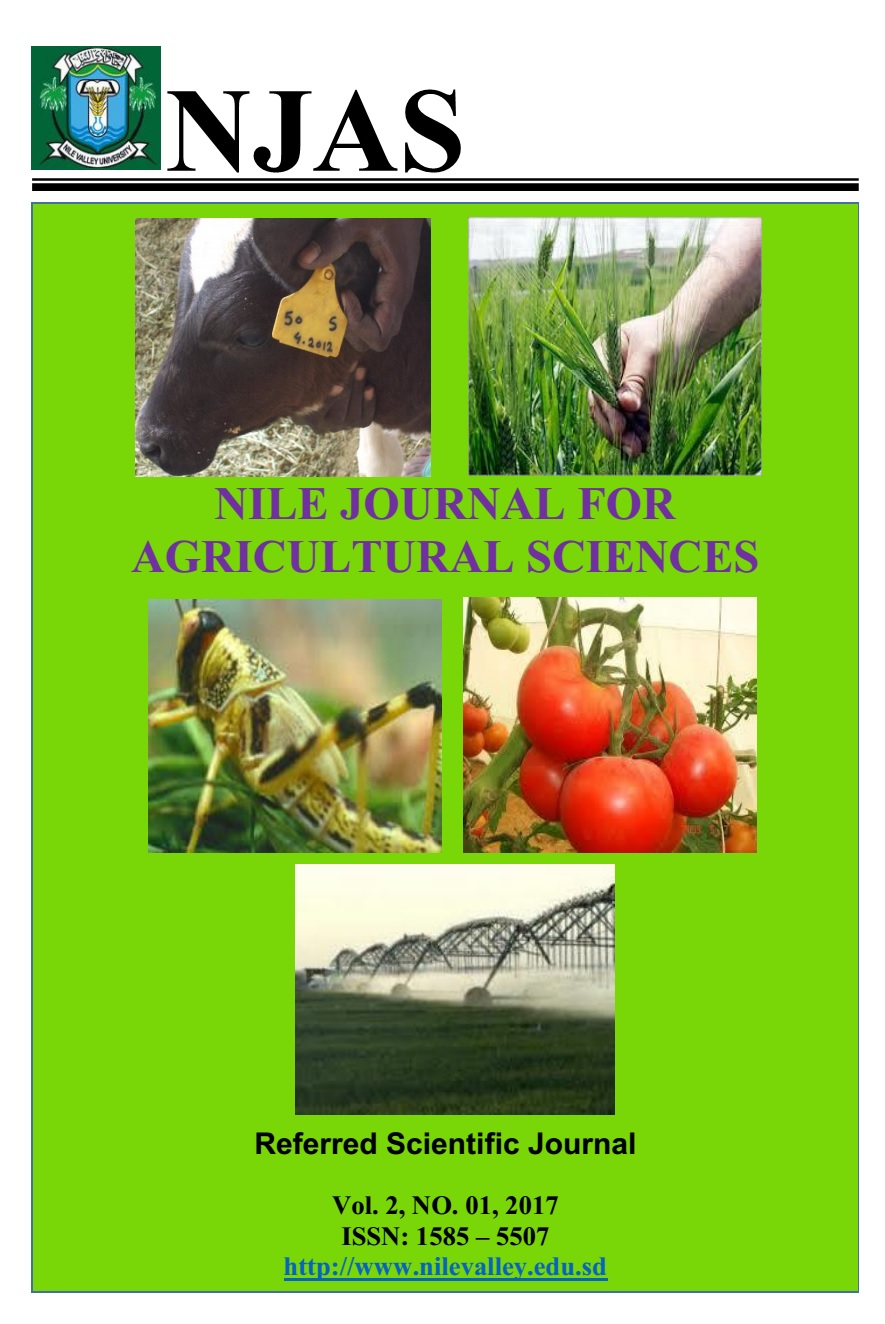The Correlation and Path Coefficient Analysis for Yield and Some Yield Components of Faba Bean (Vicia faba L.) Genotypes in Northern Sudan
الملخص
The present study was carried out for two consecutive seasons; 2010/11 and 2011/12 at Merowe Research Farm to investigate the correlation coefficient and path coefficient with two released faba bean varieties; Basabeer and Hudeiba 93 as checks and ten advanced crosses. Field experiments were conducted in a randomized complete block design with three replications. Data were collected on number of days to 50% flowering, number of days to 90% maturity, plant height (cm), number of pods per plant, number of seeds per pod, hundred seed weight (g) and seed yield kg ha-1. Statistical analysis was based on the combined data of the two seasons. Significant differences were observed among the tested genotypes for all traits. The genotypes: C.28\02, C.19\02, C.9\02 and C.98\02 produced significantly the highest seed yield and surpassed the first check (BB-7) by 16.5%, 15.1%, 9.6% and 8.0% and the second check (H.93) by 14.9%, 6.7%, 6.1% and 4.3%, respectively. Positive and highly significant relationships were observed for seed yield with hundred seed weight, number of seeds per pod and plant height. Direct and indirect effects of days to 50% flowering, number of days to 90% physiological maturity, plant height (cm), number of pods per plant, number of seeds per pod and hundred seed weight (g) upon seed yield were determined. Days to 90% physiological maturity, hundred seed weight, number of seeds per pod and plant height had the highest positive direct effects on seed yield (kg ha-1). These traits could be used as selection criteria in faba bean breeding program.

